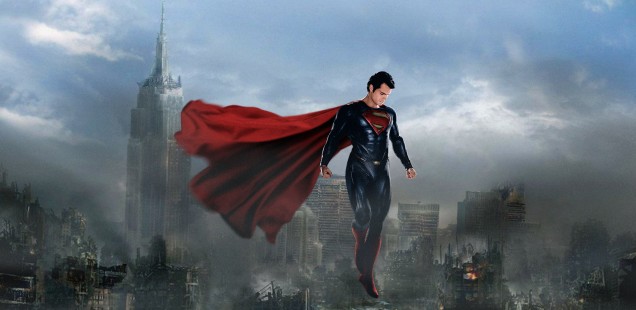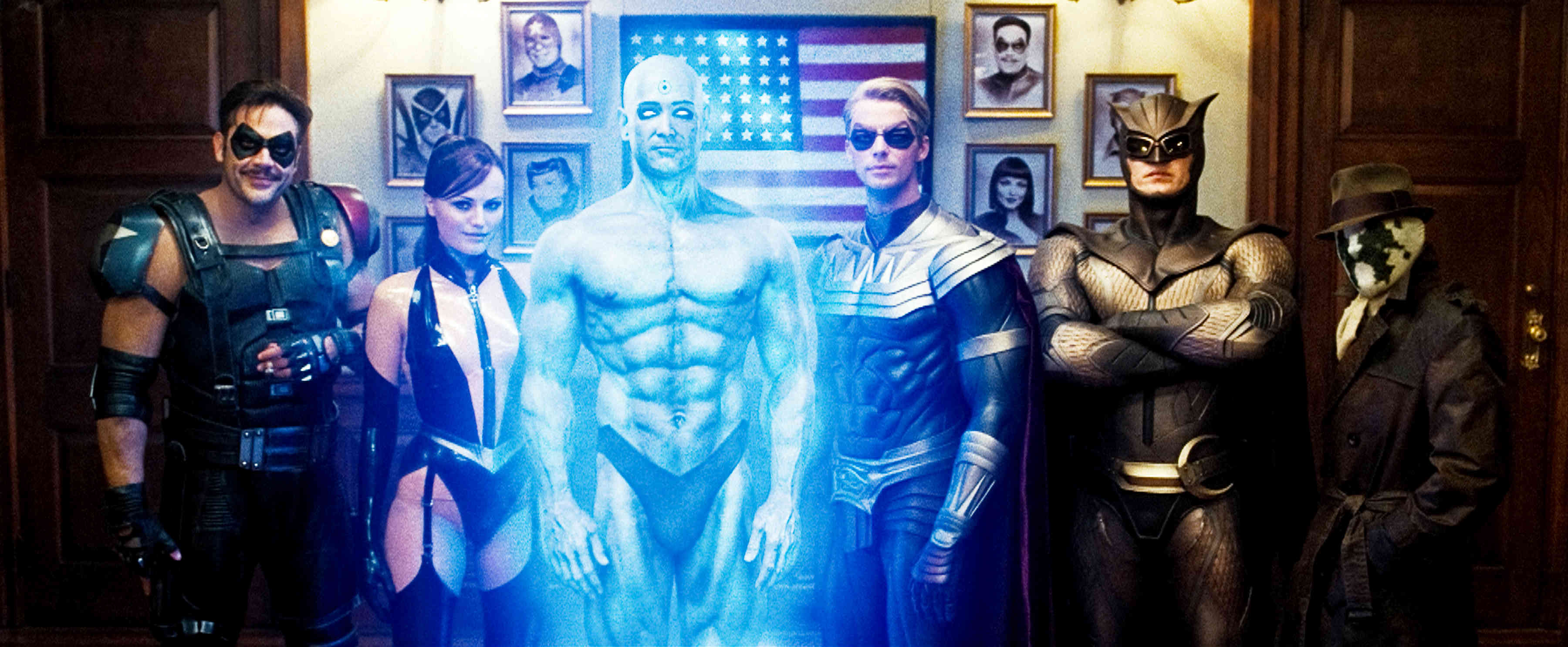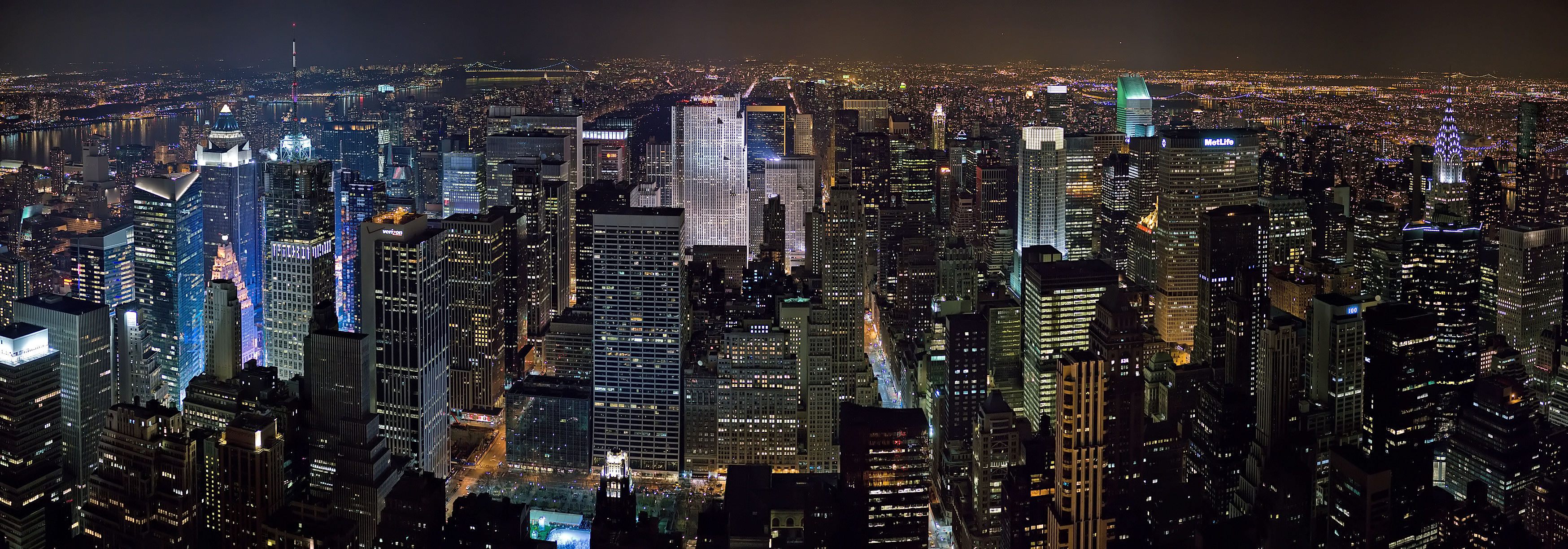
The Other Screen: Ongoing Investigations
Why tribulations on the watching of watchmen remain watchable.
A summer blockbuster season is now incomplete without two or even three big-budget superhero films. This year, we’ve got our share from both Marvel and DC with Iron Man 3 and Man of Steel respectively. Both are continued examples of a trend that the past ten years of blockbuster filmmaking has followed: multiplex catharsis for an America still recovering from 9/11. While China is quickly catching up, American audiences still pull in the biggest box office, and the country is still philosophically reeling from the events in New York 12 years ago. As such, it only makes sense the popular entertainment reflects a desire for catharsis and reflection.
That said, there is something disturbing about the way modern Hollywood cinema has chosen to interpret these still relatively raw feelings. Last year’s The Avengers featured an attack on New York so grand in scope and scale that you can only assume tens of thousands died in the carnage. But we’re not meant to care for the dead, but to focus on the fortitude and skill of the heroes defeating an attacking menace. Iron Man 3 uses loaded, calculated phrases like “Nothing’s been the same since New York” to call back to both this scene and its cultural reference point.
Meanwhile, Man of Steel’s last act has been estimated to have cost 2 trillion dollars worth of damages to the Manhattan-esque city of Metropolis – but again, the death toll is suspiciously absent. Five years ago The Dark Knight presented a very interesting meditation on the aftermath of 9/11, creating a story about the fear and exploitation of citizens from both terrorists and those they trust to protect them. Now, superhero movies visually reference it with whimsy and abandon, a cavalier set piece for good guys punching bad guys.
 With this, a certain irony emerges. Zack Snyder, the man behind the Man of Steel, also directed the sterling comic book adaptation Watchmen, which was released back in 2009. With the increasingly ludicrous destruction shown in its contemporaries, Watchmen has become a strange commentary on the reckless abandon of superheroes and the hollowness of their films. When Alan Moore and Dave Gibbons released their original work in 1987, it was a commentary on the power of superheroes and what kind of influence they would wield in a less fictional world.
With this, a certain irony emerges. Zack Snyder, the man behind the Man of Steel, also directed the sterling comic book adaptation Watchmen, which was released back in 2009. With the increasingly ludicrous destruction shown in its contemporaries, Watchmen has become a strange commentary on the reckless abandon of superheroes and the hollowness of their films. When Alan Moore and Dave Gibbons released their original work in 1987, it was a commentary on the power of superheroes and what kind of influence they would wield in a less fictional world.
The Superman-like figure of the story is Dr. Manhattan, a man whose powers are basically limitless. He can see through time and travel across the universe. He can grow to any size he wishes and can destroy men with the wave of his hand. But at the end of the novel, he’s tricked by a mere human, Adrian Veidt, who unleashes a transdimensional squid monster upon New York city, forcing America and Russia to halt their arms race and stopping almost certain nuclear destruction. It’s an excellent, witty spin on the fondness Silver Age comics had for patriotic heroism and foreign terror.
The film tweaked this slightly, with Adrian Veidt using the power generators that he and Dr. Manhattan developed to destroy major cities across the world, leading America and Russia to believe Dr. Manhattan has turned against Earth and forcing them to come together. Veidt considers the benefits of the betrayal to outweigh its dubious morals, and Dr. Manhattan agrees, forcing the other superheroes to either die in protest or keep silent.
 This huge moral dilemma offers an interesting counterpart to Man of Steel. Dr. Manhattan and Adrian Veidt both destroy and decimate for ‘the greater good’, to save the world from even greater destruction. But the film is aware of the gray morality of the situation. There’s a darkness here, all the heroes knowing it was their responsibility to save people, not murder them by the millions. And yet, perhaps this was the best option. The only option. To save the entire planet from nuclear destruction, they needed to turn the ire of the world’s superpowers against them in the most potent way possible. Even when Rorschach’s morals insist he tell the world, he demands Dr. Manhattan kill him so he can’t go through with it. It’s an ironic situation and beautifully presented, exposing the vulnerability of superheroes and their impact on society and global politics. Instead of crashing through buildings in a fist fight to the death, it’s a quiet climax, but an achingly powerful one that lingers for a very long time.
This huge moral dilemma offers an interesting counterpart to Man of Steel. Dr. Manhattan and Adrian Veidt both destroy and decimate for ‘the greater good’, to save the world from even greater destruction. But the film is aware of the gray morality of the situation. There’s a darkness here, all the heroes knowing it was their responsibility to save people, not murder them by the millions. And yet, perhaps this was the best option. The only option. To save the entire planet from nuclear destruction, they needed to turn the ire of the world’s superpowers against them in the most potent way possible. Even when Rorschach’s morals insist he tell the world, he demands Dr. Manhattan kill him so he can’t go through with it. It’s an ironic situation and beautifully presented, exposing the vulnerability of superheroes and their impact on society and global politics. Instead of crashing through buildings in a fist fight to the death, it’s a quiet climax, but an achingly powerful one that lingers for a very long time.
In Man of Steel, the destruction of Metropolis is little but eye candy. It’s well shot and the special effects are gorgeous, but the constant, lust-tinged shots of military hardware and battling caped Gods amidst crumbling skyscrapers and running, screaming citizens is odd, and frankly a little disconcerting. Expensive as it may be, it feels cheap and dissociated, culling images of tragedies that occurred just over a decade ago and sexifying them with flashy CGI. On the Marvel side of things, The Avengers had just as much, if not more of an issue with this. The entire Marvel film universe built itself into a cacophony of sound and fury that escalated to a climax set in Manhattan where no civilian was even scratched by the villains, and the heroes tore apart skyscrapers with abandon. But it’s okay, the film tells us. They’re the good guys. They have to do this, to protect us. As breezy and as light as Avenger’s script was, it’s hard to ignore the complete disregard and abandon shown towards real world events, filling its frames with cheap parallel images in an attempt to resonate a silly superhero story with a real world act of mass murder.
When Watchmen was released in its original comic book form, it had much to say about the attitudes of superheroes and how they related to American culture. From the Vietcong-stomping Dr. Manhattan to the psychopathic noir detective Rorschach and the constant ticking of the doomsday clock, it was a twisted and highly intelligent story that delved deep and dark into the Silver Age. But with Frank Miller’s gritty take on Batman and an overall more violent and sex-filled 90s for comic books, Watchmen’s take on comics lost some of the impact. But now, 25 years after its release, both the film and the original graphic novel have become relevant in a new way.
 In theatres filled with superhero blockbusters, each finding new ways to tear down city blocks and tumble skyscrapers with little regard for human casualties or the cost of damages, Watchmen is a story about broken, desperate and confused superheroes who hold the power to destroy their own world, pondering the implications of such might. The destruction at the end doesn’t arrive in a flashy punch-up – it’s seen through a wall of monitors that destroys any sense of excitement or catharsis. It’s a cold feeling of dread, of the capability and fallibility of superheroes and global superpowers, and the monumental weight that real destruction and real terror bring.
In theatres filled with superhero blockbusters, each finding new ways to tear down city blocks and tumble skyscrapers with little regard for human casualties or the cost of damages, Watchmen is a story about broken, desperate and confused superheroes who hold the power to destroy their own world, pondering the implications of such might. The destruction at the end doesn’t arrive in a flashy punch-up – it’s seen through a wall of monitors that destroys any sense of excitement or catharsis. It’s a cold feeling of dread, of the capability and fallibility of superheroes and global superpowers, and the monumental weight that real destruction and real terror bring.
It’s tiring to have the iconography of an event like 9/11 splashed across screens again and again without consideration for relevance or even wit. There is nothing wrong with making parallels to 9/11 in big blockbuster tentpoles. Both Watchmen and The Dark Knight proved that you can handle the material in interesting, evocative ways. But the way many superhero movies choose to use it borders on distasteful, using it to fund millions of dollars worth of explosions and fighting, but providing little food for thought in the process. Before he dies, Rorschach asks Dr. Manhattan “What’s another body amongst the foundations?”, hammering home the impact of every life that will be lost that day, and just what acts of mass violence, terror and destruction mean to the world. The storytelling foundations of Man of Steel and The Avengers are built on the bodies of 3,000 people. Perhaps it’s time to start treating them with the gravitas they deserve.
Andrew Huntly’s cinematic rants have been complimented on British radio shows and their associated podcasts.